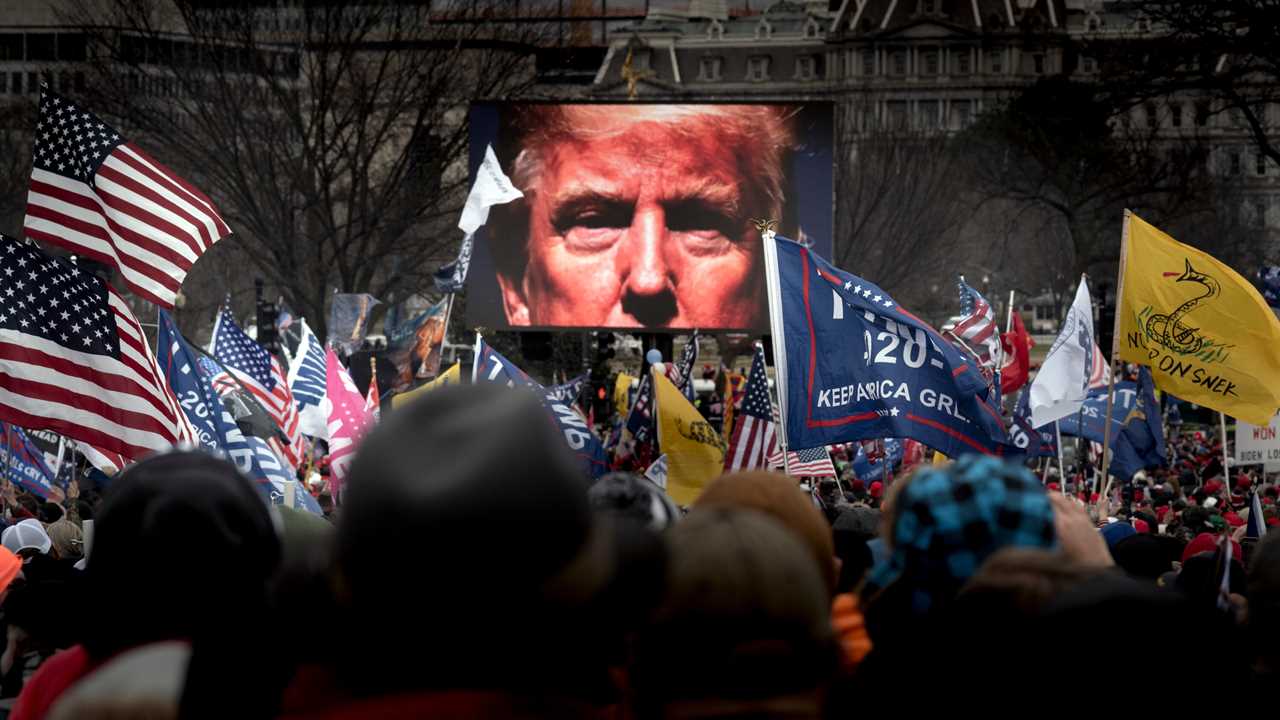
For 77 days between the election and the inauguration, President Donald J. Trump attempted to subvert American democracy with a lie about election fraud that he had been grooming for years.
A New York Times examination of the events that unfolded after the election shows how the president — enabled by Republican leaders, advised by conspiracy-minded lawyers and bankrolled by a new class of Trump-era donors — waged an extralegal campaign that convinced tens of millions of Americans the election had been stolen and made the deadly Jan. 6 assault on the Capitol almost inevitable.
Interviews with central players, along with documents, videos and previously unreported emails, tell the story of a campaign that was more coordinated than previously understood, even as it strayed farther from reality with each passing day.
Here are some key takeaways:
As some lawyers on Trump’s team pulled back, others were ready to press ahead with suits skating the lines of legal ethics and reason
Within 10 days of the election, even as Mr. Trump and his supporters promoted allegation after allegation of voter fraud, his team of election lawyers knew that the reality was the inverse of what Mr. Trump was presenting: They were not finding substantial evidence of malfeasance or enough irregularities to overturn the election.
That reality was hammered home on Nov. 12, when final Arizona results showed Joseph R. Biden Jr. with an irreversible lead of more than 10,000 votes that rendered the legal team’s main lawsuit in that state — which had identified all of 191 ballots to contest — moot.
At an Oval Office meeting that day, the election lawyers squared off against the president’s personal lawyer, Rudolph W. Giuliani, over Mr. Giuliani’s embrace of questionable legal tactics and conspiracy theories like one that Dominion voting machines had transformed Trump votes into Biden votes.
Ultimately, Mr. Trump decided to give Mr. Giuliani leadership of the entire legal strategy, making Nov. 12 the day when Mr. Trump’s effort to reverse his loss in the courts became an all-out, extralegal campaign to disenfranchise millions of voters based on the false notion of pervasive fraud.
Voting-machine conspiracy theories became intertwined with a supercomputer story pushed in conservative media
The Dominion conspiracy theory taking root among the president and many of his supporters had been weeks in the making. In late October, an obscure conservative website, The American Report, was pushing stories about a supercomputer called The Hammer that it said was running software called Scorecard to steal votes from Mr. Trump.
The theory found amplification the day before the election on the podcast of Mr. Trump’s former political strategist, Stephen K. Bannon, who invited two proponents of the theory onto his show to speak about it: Thomas McInerney, a retired Air Force lieutenant general who had previously been banned from Fox News for lies about Senator John McCain’s record as a prison of war in Vietnam, and Sidney Powell, a lawyer who would become one of Mr. Trump’s most controversial and unbridled defenders.
Trump was enabled by influential Republicans motivated by ambition, fear or a misplaced belief that he would not go too far
Mr. Trump was given vital room to run by key Republicans, especially the Senate majority leader, Mitch McConnell, who made an early decision to join his fellow party members in breaking from the tradition of recognizing the victor after the major television networks and The Associated Press called the race.
Mr. McConnell feared alienating a president whose help he needed in two Georgia Senate runoffs that would decide his control of the chamber. He also heeded misplaced assurances from White House aides like Jared Kushner that Mr. Trump would eventually accede to reality, people close to the senator told The Times. His later recognition of Mr. Biden’s victory would not be enough to stop 14 Republican senators from joining a late effort to nullify millions of Americans’ votes just ahead of Jan. 6.
Texas’ lawsuit challenging election results in 4 battleground states was ghostwritten
The Texas attorney general’s Supreme Court lawsuit seeking to effectively wipe out 20 million votes in four battleground states won by Mr. Biden was secretly drafted by lawyers close to the White House, The Times found. Two-thirds of the country’s Republican state attorneys general, 18 in all, would join an amicus brief, but only after senior officials in several of their offices raised red flags.
“It is most likely that the court will deny this in one sentence,” North Dakota’s deputy solicitor general, James E. Nicolai, wrote in an email to his boss.
On Dec. 11, the court did just that, ruling that Texas had no right to challenge other states’ votes. Three days later, the Electoral College affirmed Mr. Biden’s win.
The lie was propelled forward by new and more radical lawyers and financiers
At a White House meeting four days later, Mr. Trump met with Ms. Powell, and two prominent associates: the former Overstock.com chief executive Patrick Byrne, who was financing his own team of “cybersleuths” to help prove voter fraud, and Michael T. Flynn, the disgraced and newly pardoned former national security adviser who had by then publicly raised the notion that Mr. Trump should declare martial law. The session descended into a shouting match between the three and members of Mr. Trump’s White House team, including his White House counsel, Pat Cipollone.






